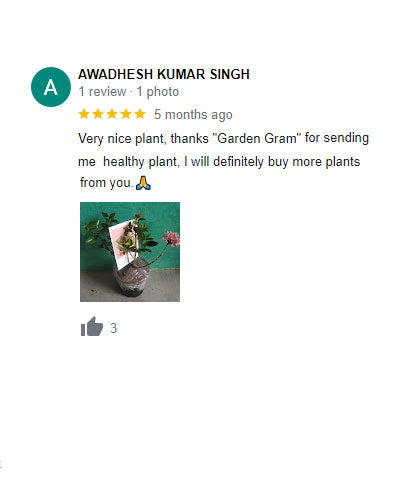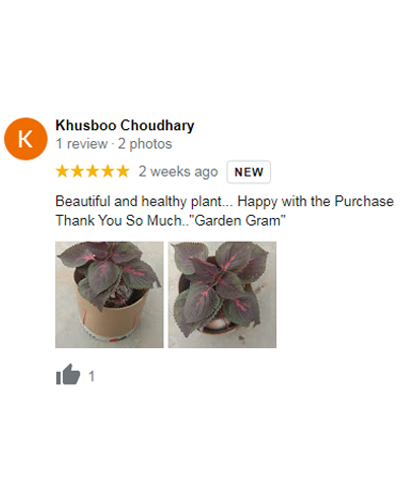Self-Watering Planters: Ideal Solutions for Busy Plant Owners
Understanding Self-Watering Planters
What are self-watering planters?
Self-watering planters are essentially containers designed to make watering your plants easier. They have a special built-in system that holds water in a reservoir beneath the soil. This reservoir slowly releases water to the plant's roots through a wicking mechanism, which is usually made of something absorbent like soil or fabric. So, instead of watering your plants from the top like in regular pots, self-watering planters provide a steady supply of water from below, keeping your plants consistently hydrated without you having to water them as frequently.Advantages of using self-watering planters
Self-watering planters are a game-changer for busy folks because they offer convenience and help maintain consistent moisture levels for your plants. Imagine not having to worry about watering your plants every day or stressing over whether you're giving them too much or too little water. With self-watering planters, you can enjoy peace of mind knowing that your plants are getting the water they need, when they need it, even if you're tied up with other responsibilities. Plus, consistent moisture levels promote healthier plant growth, so you can watch your green friends thrive with minimal effort.
Types of Self-Watering Planters
Classic Self-Watering Planters
These are the tried-and-true options you've likely seen before. They come in various shapes and sizes, from simple pots to decorative containers, and are made from materials like plastic, terracotta, or ceramic. Classic self-watering planters have a built-in reservoir that holds water, which is then gradually absorbed by the plant's roots through a wicking system. They're reliable, easy to find, and perfect for those who prefer a traditional approach to plant care.
Smart Self-Watering Systems
For the tech-savvy plant enthusiasts, smart self-watering systems are the way to go. These innovative planters are equipped with advanced features such as sensors, timers, and even smartphone connectivity. They automatically adjust watering schedules based on factors like soil moisture levels and weather conditions, ensuring your plants receive the perfect amount of water at all times. While they may be a bit more expensive upfront, the convenience and precision they offer make them a worthwhile investment for busy plant owners.
DIY Self-Watering Planter Projects
If you're feeling crafty, why not try your hand at creating your own self-watering planters? There are plenty of DIY tutorials and ideas available online, using materials you likely already have at home. From repurposed containers to homemade irrigation systems, the possibilities are endless. Not only will you save money by making your own planters, but you'll also have the satisfaction of knowing you created a custom solution tailored to your plant's needs. Plus, DIY projects are a fun way to unleash your creativity and add a personal touch to your home or garden décor.
Choosing the Right Self-Watering Planter
Selecting the perfect self-watering planter might seem daunting, but it doesn't have to be complicated. Here's what to keep in mind:
Size and Capacity: Consider the size of your plant and how much water it needs. You'll want a planter that can comfortably accommodate your plant's roots and has a reservoir large enough to hold an adequate amount of water.
Material Durability: Look for a planter made from sturdy materials like plastic or ceramic that can withstand outdoor elements or indoor conditions without deteriorating.
Aesthetic Appeal: Choose a planter that complements your style and fits in with your home decor or outdoor space. Whether you prefer sleek and modern or rustic and charming, there's a self-watering planter out there for you.
Budget-Friendly Choices: You don't have to spend a fortune to find a quality self-watering planter. Look for affordable options that offer the features you need without sacrificing quality. From basic models to DIY solutions, there's something for every budget.
Tips for Using Self-Watering Planters Effectively
Proper Setup and Maintenance: Make sure your self-watering planter is set up correctly for it to work its magic. Follow the instructions provided with the planter to assemble it and fill the reservoir with water. Keep it clean by regularly rinsing out the reservoir and replacing any old wicks or filters.
Monitor Water Levels: Keep an eye on the water level in your self-watering planter. If it's getting low, add more water to the reservoir. Conversely, if it's consistently full, you might need to adjust your watering schedule to avoid over-watering your plants.
Adjust as Needed: Pay attention to environmental factors like temperature and humidity, as they can affect how quickly your plants use up water. If it's particularly hot or dry, your plants may need more water than usual. On the other hand, if it's cool and humid, they might need less.
Avoid Waterlogging: While self-watering planters are great for keeping your plants hydrated, it's still possible to over-water them. If you notice that the soil is consistently soggy or your plants are showing signs of stress like yellowing leaves or root rot, reduce the amount of water you're adding to the reservoir.
Maximize Plant Health: Take advantage of the consistent moisture provided by self-watering planters to promote healthy plant growth. Consider adding a slow-release fertilizer to the reservoir to give your plants a steady supply of nutrients. Additionally, rotate your plants occasionally to ensure they receive even sunlight exposure and grow evenly.
Frequently Asked Questions/ FAQs
1. How do self-watering plants work?
Self-watering plants utilize a reservoir system to supply water to the plant roots as needed. Typically, there is a reservoir at the bottom of the planter with a wicking mechanism, such as a wick or a porous material, that draws water up into the soil. As the soil dries out, the roots absorb water through capillary action from the reservoir, ensuring a consistent moisture level for the plant.
2. How do you take care of self-watering plants?
Taking care of self-watering plants involves monitoring the water level in the reservoir and refilling it when necessary. It's essential to check the moisture level of the soil occasionally to ensure it's not too dry or too waterlogged. Additionally, regular maintenance such as pruning, removing dead leaves, and occasional fertilization will help keep the plant healthy.
3. How often do you add water to self-watering planter?
The frequency of adding water to a self-watering planter depends on factors such as the plant species, environmental conditions, and the size of the reservoir. In general, you should monitor the water level regularly and add more water when it's low. During hot and dry weather, you may need to refill the reservoir more frequently to ensure the plant has an adequate water supply. As a guideline, aim to refill the reservoir every 1-2 weeks, but adjust based on the specific needs of your plant and environment.
If you're ready to explore the world of self-watering planters and enhance your gardening experience, GardenGram offers a diverse range of options to suit every need and preference. From traditional designs to innovative systems, our collection features high-quality planters that combine functionality with style. Visit our online store today to discover the perfect self-watering planter for your indoor or outdoor space and elevate your plant care routine effortlessly.















